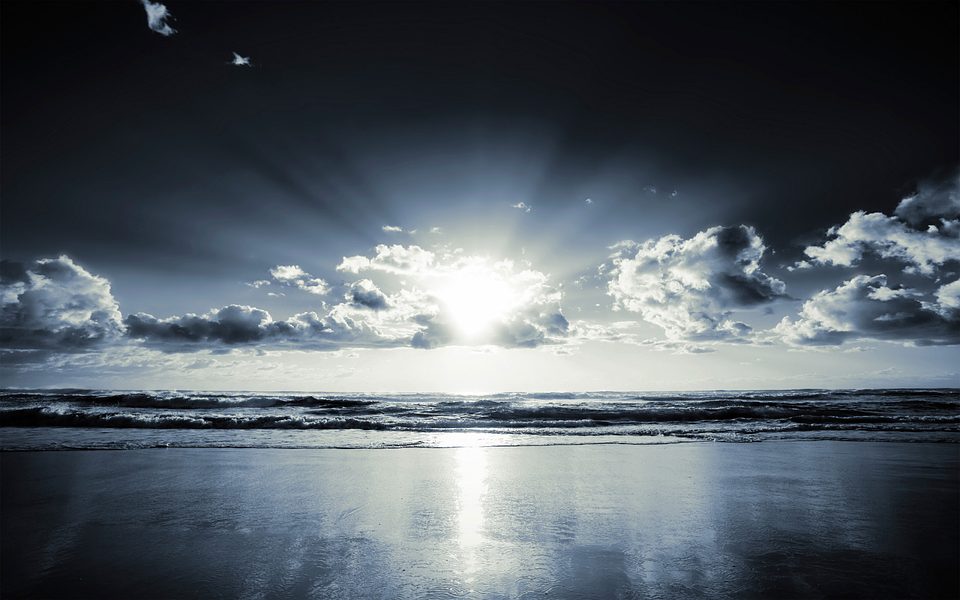The days are getting shorter. Holiday season right around the corner. And you will get no good sunlight until many months after New Year’s Eve…
Consequence?
Many people don’t feel as well during the winter months as they do during the summertime.
The reason for that statement is not just that it’s colder outside–the light in your environment has a massive impact on your overall health and well-being.
Shocker?
Yes…
Let’s explore why:
How Light Affects Your Overall Health

Many people don’t know that the light you put into your body is equally essential for your health as the food you eat or the movement you get.
That’s right.
In that way, science is frequently counterintuitive. Let me give an analogy:
Just like people in the early 18th-century had a hard time understanding Newtonian mechanics because they grew up with a different worldview, the same is true for the implications of light on your health.
For instance, since the 1990s it has become abundantly clear that the light entering your eyes affects what is called your “circadian rhythm“.
The circadian rhythm is the 24-hour day and night cycle that your body runs on.
How?
Well, the eye is connected to a brain area called the “suprachiasmatic nucleus” (SNC). That SNC functions as the central clock in your body – keeping track of time.
When light – specifically blue and green light – enter your eyes, they signal to your brain that it’s daytime.
Sunlight emits lots of blue and green light, especially when the sun is higher up the sky–but artificial light in the environment does so as well.
Artificial light in your environment is thus continually exposing you to blue and green (visible) light.
As a result, artificial light exposure at night has huge implications for your risk of becoming obese, having cardiovascular problems, or getting diabetes.
Another example of why light matters for health?
Sure:
Between 30-50% of people living in developed countries have low vitamin D levels. Those levels are measured with a “25-hydroxyvitamin d” blood test that can be ordered by your primary care physician.
Not getting enough sunlight exposure when the sun is high up the sky is one reason for these low vitamin D levels.
The solution?
Expose your skin to more sunlight. To be more precise, you have to go outside around noon. And for vitamin D creation, your bare skin needs to be exposed.
You may think: “but why does vitamin D matter anyway?”
Simple:
Vitamin D deficiency has huge widespread effects on your overall health, increasing your risk for autoimmune disease, diabetes, several types of cancers, heart disease, and more.
Guess what: vitamin D pills might not be the best solution either — sunlight exposure is independently associated with lower overall mortality rates.
Stated in plain English, mortality rates measure your overall risk of dying, independent of any disease. Hence, lower is better in this case, meaning that you’ll have an increased ability to reach old age.
Of course, more sunlight exposure is not always better. Sunburns really are damaging and the best antidote is to get out of the sun long before you burn.
If removing yourself from the equation isn’t possible, make sure to cover up with clothes and a hat.
But don’t get me wrong:
Sensible sunlight exposure has massive overall health benefits, not only for improving your energy levels and making you feel awake but also enhancing the functioning of your immune function, helping you feel better, etcetera.
So what to do?
Quit your job and live in the sun?
No, because you’d quickly go broke and die of malnutrition.
What you need, is a tool that gives you many of the benefits of sunlight. In your home, at your fingertips.
What’s that tool? Red light therapy:
Red Light Therapy: Game Changer For Your Health And Resilience?
Thousands of studies have been backing red light therapy for a few years now.
The therapy involves using a panel that contains tens if not hundreds of LEDs. These LEDs, in turn, only emit light in the red and infrared part of the spectrum.
Sunlight, on the contrary, contains many different wavelengths, ranging from ultraviolet, visible, and infrared light.
With red light therapy, you’re only using a few wavelengths that have been proven to be most healing in scientific studies.
Inflammation
One big benefit of red light therapy is that it counters some types of inflammation. Excess inflammation can be a huge contributor to chronic disease.
Red light therapy allows you to treat your whole body with the red and infrared wavelengths so that inflammation is lowered everywhere at the cellular level.
Mood
Remember those mood-enhancing benefits when you’re outside during the summertime? Guess what: you can have access to those feelings 24-7 with a red light therapy device.
The therapy has specifically been proven to counter major depression. Mental diseases such as depression have increased to almost pandemic proportions, so help in this area is highly beneficial.
Even if you’ve got traumatic brain injury, red light therapy does improve mood.
Say goodbye to that winter dip!
Looking and feeling better
How about red light therapy’s effect on your vanity? Well, benefits can even be found there.
While different studies exist on this topic, overall, red light therapy can increase the amount of fat you lose on a daily basis with 200-300%.
At first sight, such numbers look completely insane. Upon further contemplation, however, it’s easy to understand why this effect is so profound.
For millions of years, your human ancestors spend most of their time in sunlight (during the day). Only in 1879, with the invention of the incandescent light bulb that could be mass-marketed by Edison, did humans begin to move inside.
Since the 21st century, moreover, that trend has continued. While in the early 1900s, most jobs were still outside jobs, today that distribution has reversed.
Hence, you and I aren’t getting much light exposure anymore if you’re working inside all day long.
Offices are not conducive to optimal health on so many levels.
BUT, with a 10-20 minute red light therapy session at home, you’ll reduce many of the downsides of working in an office.
Great! Another aid to reversing the obesity epidemic!
Seasonal Affective Disorder
Back to the original topic of this blog post: seasonal affective disorder.
Huge differences exist in the number of people having problems with Seasonal Affective Disorder (SAD) The problem is far less problematic if you’re living closer to the equator.
Guess what?
Light therapy is still the most important intervention for countering SAD.
Of course, red light therapy gives you a very big dosage of specifically beneficial wavelengths.
Antidepressants can also be used for countering SAD – and are used by many – but may not be the best first-line of intervention for most people. Antidepressants such as SSRIs can be associated with side-effects, for instance.
Exercise would be another good option to counter SAD that has great merit in the scientific literature.
The Bottom Line
With shorter days, you simply need a “magic pill” that helps you remember how great you felt at the beach last summer.
Red light therapy is that “pill”.
You may think: “so I should visit a salon every week and get a session in?”
Not at all…
Prices for these devices have come down massively since they’ve been mass-marketed in the last few years. The consumer base using red light therapy is growing exponentially.
For that reason, let’s consider how to apply this specific intervention:
How To Apply Red Light Therapy
Here’s where things get simple:
For the best results, you need a full-body red light therapy unit. I’m not giving specific recommendations in this blog, a few criteria exist.
For instance:
- It’s best to select a red light therapy unit that covers most of your body. The bigger the panel and the more LEDs, the greater the light output, and the better the effect (up until a certain point).
- Many red light therapy offerings exist – just look at the number of LEDs and the total wattage of the unit. Also check for online reviews to get the best unit within a specific category
- Bigger units can be used for 10-15 minutes a day for a total body treatment. Of course, you’ll have to turn around a few times because red light therapy comes in a panel.
- Red light therapy tanning beds also exist but are way overpriced for home-consumer use. 99% of people don’t need a $40,000 – $200,000k tanning bed. A professional-grade panel can already be bought for < $1,000 though
- Intensity with red light therapy is most important. Greater intensity equals deeper tissue penetration. Deeper tissue penetration entails that your muscles, brain, nerves, bones, and blood vessels are all affected by the light.
Convinced?
I’m not telling you what unit to buy. Do your own research instead – and participate in this new health revolution.
Lastly, let’s understand this development form a big-picture perspective:
Conclusion: Viva La Revolución

And yet, that development only achieved an apex after the 2000s. Today, almost anyone is doing yoga, breathing exercises, mindfulness, or another meditation form.
How about light exposure?
Well, that development has also started as a niche. Over time though, you can expect it to become more prominent. Just as with meditation, such a development may take a couple of decades to flesh out – such developments go faster in this day and age of the Internet.
And yet, the development of using light therapy such as red light is only in the very early stages.
Even though about 3,000-5,000 peer-reviewed studies have been published on this subject to date, thousands and even millions are expected to come.
Some experts in red light therapy even believe that in a couple of years, almost all homes will have such a device in their midst.
Light therapy is thus cool. And because the therapy is backed by science, you’d be crazy not to use the opportunity.
Lose fat? Feel better? Improve your mood? Reduce stress? Red light therapy is your new-found best friend…

